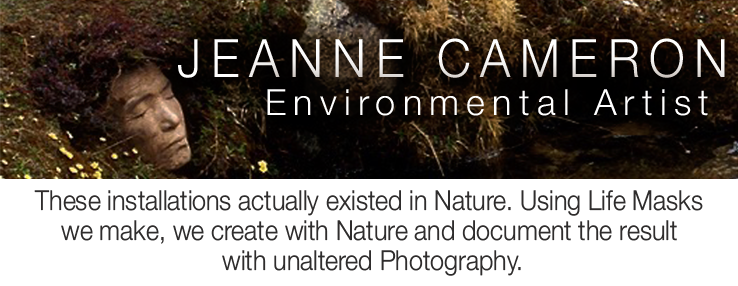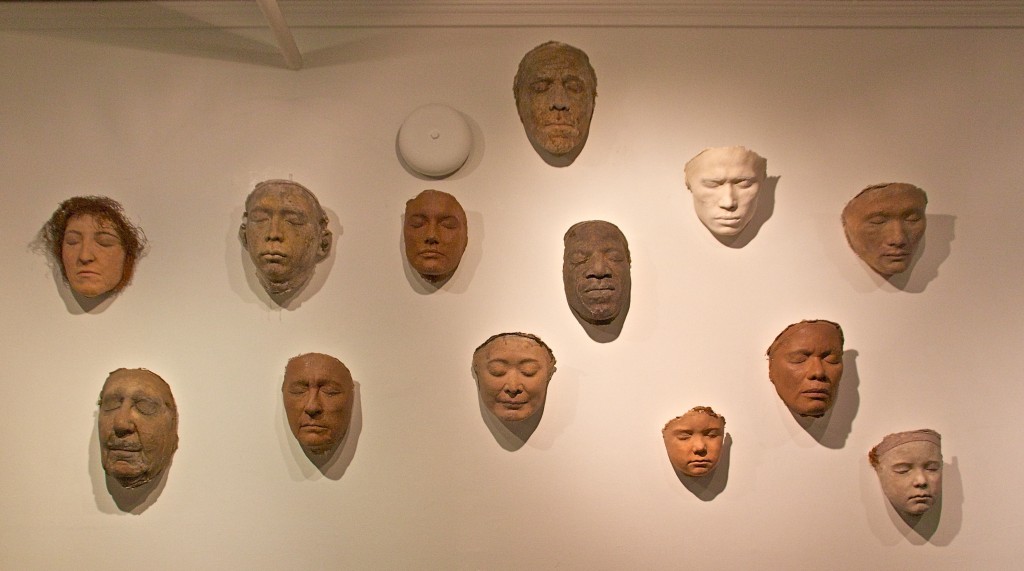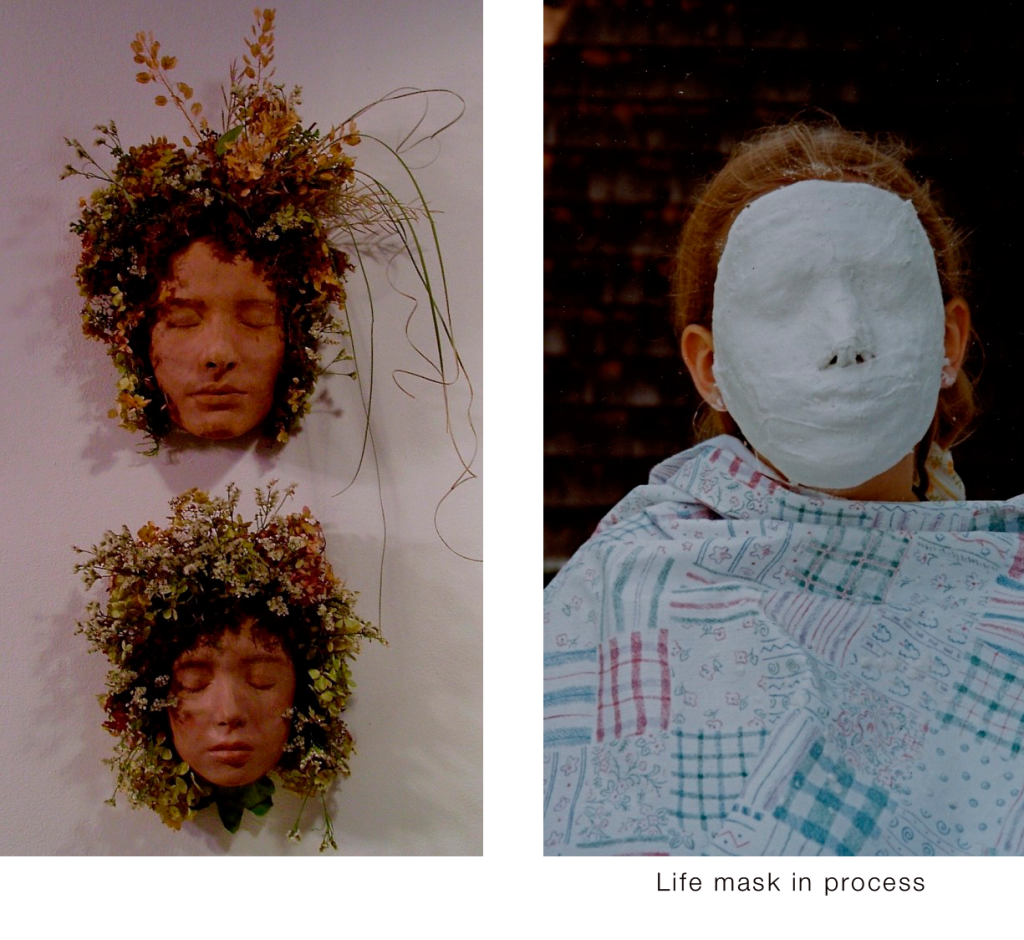This quote from John O’Donohue’s book, “Anam Cara” (A Book of Celtic Wisdom) was one of the main inspirations for the concept of using human faces to provide a way into the consciousness of other forms of life. The words of the Irish poet inspired me to “put a face on Nature”—perhaps providing a way for the viewer to approach nature in a new way.
These masks are cast from the faces of live people who are connected to the environments they inhabit in the images. When the being is reclining, it indicates that the being is asleep, waiting for a change of season or present condition. The eyes are closed because they are waiting to be approached and asked to share their wisdom and experience with us. We must approach nature beings with an open heart and mind to connect with them. For example the old oak tree cannot reach out and grab you by the shoulder saying, “Come over here and I will tell you about strength!”
These masks came into being one summer in the late 1980s in Maine, where family and friends gather each year. Linny Gibson, my friend and artistic collaborator had just worked on creating full body casts for an exhibition of South American feather art at the University of Pennsylvania. She suggested we make casts of everyone’s faces. It was great fun and that was the beginning. There are now 90 of the life masks, cast in Hydocal for durability, painted to harmonize with the surroundings and made in many locales all over the world using indigenous people as subjects.





